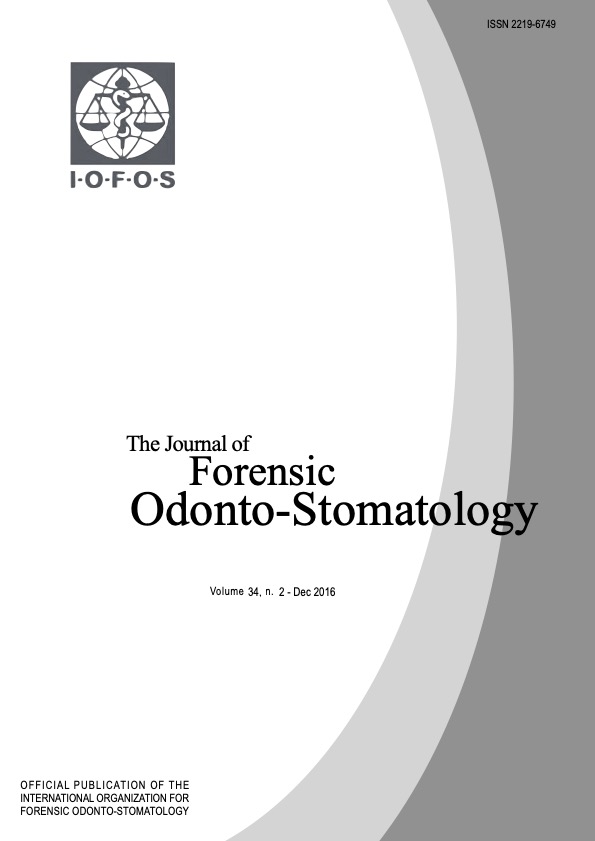Assessing age-related change in Japanese mental foramen opening direction using multidetector computed tomography
Keywords:
Forensic Odontology, Forensic Anthropology, Postmortem Computed Tomography Imaging, Aging, JapaneseAbstract
ABSTRACT
Objective: The purpose of this study was to investigate how the opening direction of the mental foramen (MF) changes with age in a Japanese population using multi-detector computed tomography (MDCT). Methods: Post-mortem MDCT scans of 121 Japanese subjects (66 males and 55 females) were carried out where all subjects possessed at least twenty teeth, including molar teeth, in the upper and lower jaws. Two angles of the mental foramen opening were measured, namely the superior-inferior angle in the coronal plane and anterior-posterior angle in the transverse plane, on the CT reconstructed images. The associations between age and these two angles were evaluated using a multiple regression analysis. Results: For male subjects, the relationship between the superior-inferior angle and age was a quadratic curve (p<0.001). This angle increased until the subject reached their early 50s and then the angle decreased with age. In the transverse plane, there
was a linear relation between the anterior-posterior angle and age (p=0.002).It was noted also that the angle decreased with age. By contrast, however, no significant associations between the two angles and age for either measurement were noted for female subjects. This study demonstrated that the opening direction of the mental foramen changes with age in Japanese male subjects. By contrast this change in the opening direction of the mental foramen was not demonstrated in Japanese female subjects. In male subjects, the opening direction moves superiorly until the individual reaches their early 50s, and then moves inferiorly with advancing age. It also shifts from a posterior to an anterior position with age. Conclusion: These observed change differ from the results of previous studies. The findings could be useful for forensic science as they demonstrate a change in the position of mental foramen in a sample of contemporaneous male Japanese subjects.

